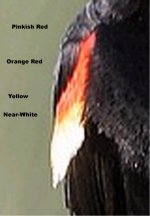Hi,
I think this is a tri coloured blackbird, but a person has told me it is a red winged blackbird. It was taken up in Northen California at Tule Lake.
Any idea?
http://www.tetch.com/pix/california/tulelake/img_2610.htm
http://www.tetch.com/pix/california/tulelake/img_2611e.htm
http://www.tetch.com/pix/california/tulelake/img_2580e.htm
Also, is this a fox sparrow?
http://www.tetch.com/pix/california/tulelake/img_2536e.htm
thanks
I think this is a tri coloured blackbird, but a person has told me it is a red winged blackbird. It was taken up in Northen California at Tule Lake.
Any idea?
http://www.tetch.com/pix/california/tulelake/img_2610.htm
http://www.tetch.com/pix/california/tulelake/img_2611e.htm
http://www.tetch.com/pix/california/tulelake/img_2580e.htm
Also, is this a fox sparrow?
http://www.tetch.com/pix/california/tulelake/img_2536e.htm
thanks
Last edited:





